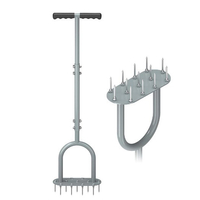9 signs your lawn needs aerating
Here’s how you know when your lawn needs aerating
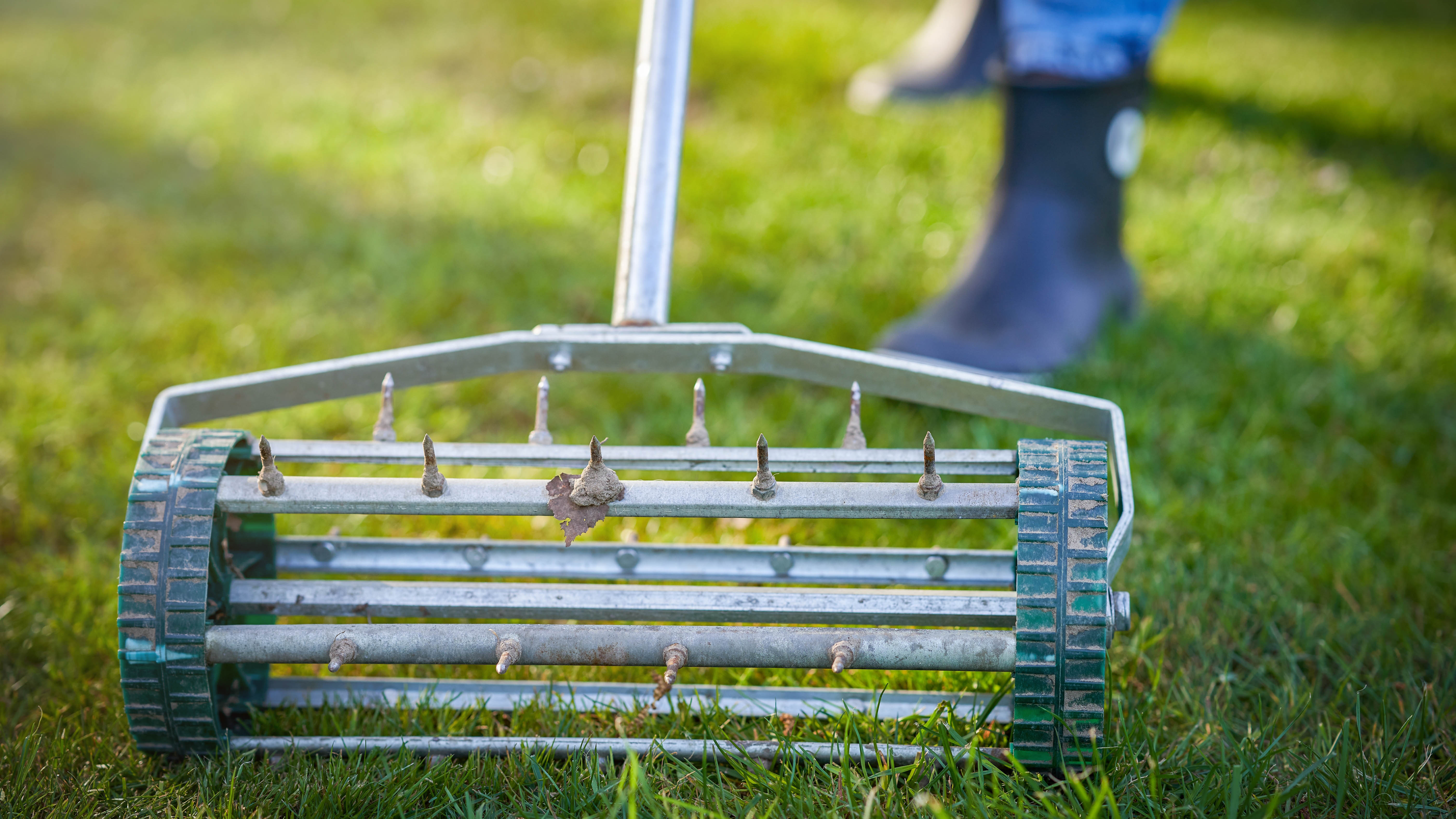
At this time of year, our lawn care routine lessens. We cut back on mowing, although you should make sure you’re not cutting the grass too short, and less water is required from our irrigation systems too. But, that’s not to say our work’s done in our backyard. One chore which many take on in the early fall is learning how to aerate a lawn.
This involves puncturing the soil surface through one means or another to dislodge the composition and lessen its density. In doing this, more oxygen and moisture can penetrate the top layer, making nutrients more accessible for grass roots. The result is a thriving lawn with better, thicker growth. However, this is not a chore to conduct on a regular basis, otherwise it can end up damaging your lawn and doing more harm than good. So how can you tell if it’s the right time to aerate your lawn?
To help you out, we’ve listed 9 telltale signs your lawn needs aerating, so you know when it’s time to give your soil some TLC.
1. Compacted soil
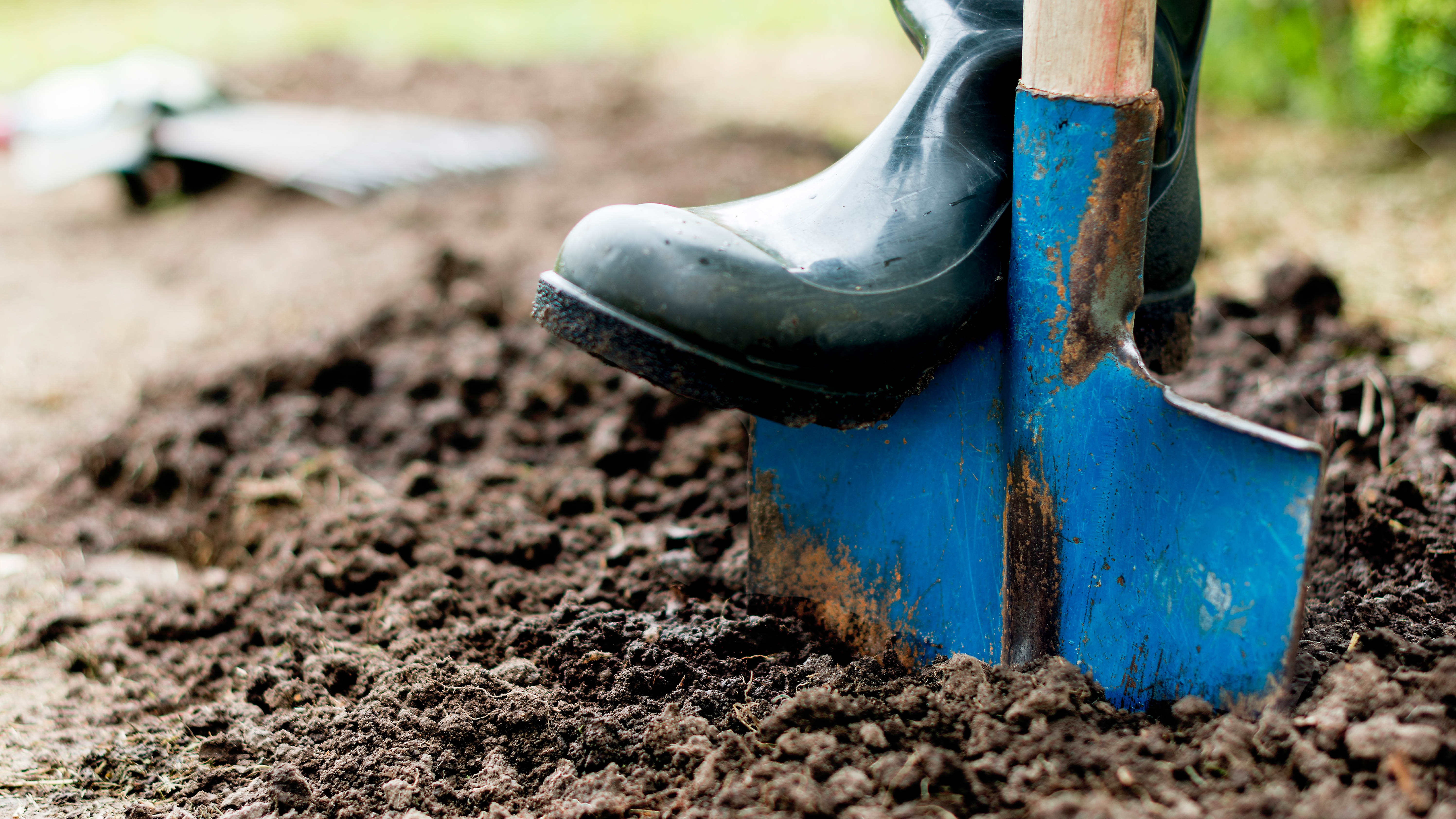
The first and most obvious indicator is hard soil that is compacted. Soil naturally compacts from any weight on the surface, be it your lawn mower or everyday footfall. It will even gradually compact itself from its own weight (particularly if it has a high clay content). As the particles in the soil are crowded together over time, there’s less space for water or oxygen in the mix. This results in a dense and hard composition, with less spring as you walk on it.
So, if you’ve noticed your soil feels overly hard compared to previous years, it might benefit from aeration.
The screwdriver test
One way to test the compactness of your soil is the screwdriver test. Drive a screwdriver or rod into the soil. If it moves through easily, you don’t need to worry. But, if you’re having a hard time, the density is too great. This is a good way to check your lawn is getting enough water too. The screwdriver should penetrate wet soil with ease, with moisture levels reaching 6-inches deep.
2. Discoloration
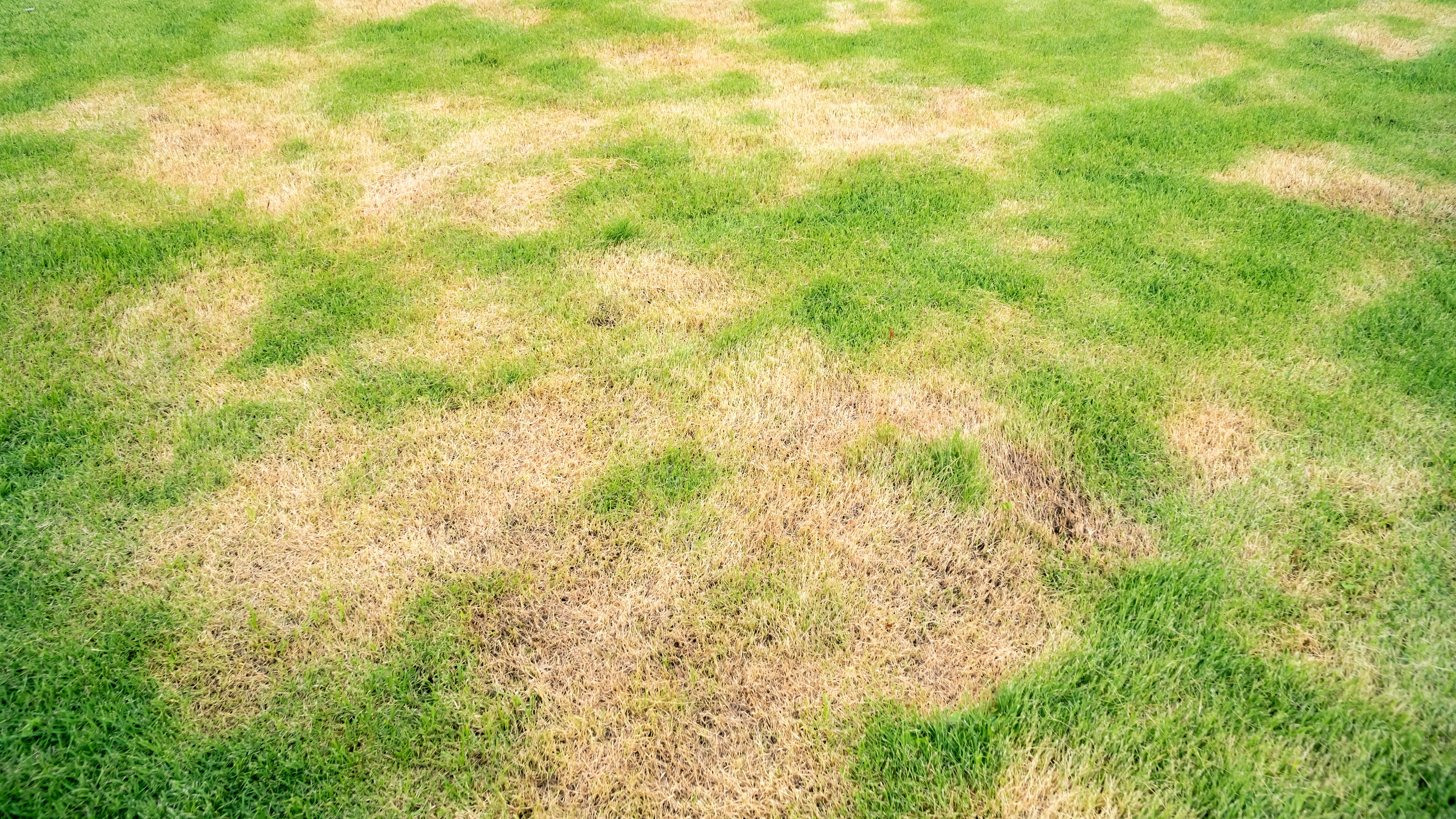
If your grass is discolored and is filled with brown and yellow patches it’s a sign that it’s struggling and lacks nutrients. As mentioned above, soil compaction could be one of the problems leading to a nutrient deficiency. Water and oxygen will find it tough to reach through to feed the roots, and the lush green lawn you were hoping for won’t be able to thrive. There'll also be less space for the roots to grow, which will also take its toll. And compaction may also lead to water-logging which can cause the roots to die.
Sign up to get the BEST of Tom's Guide direct to your inbox.
Get instant access to breaking news, the hottest reviews, great deals and helpful tips.
Apart from discolored yellow and brown patches, you might also notice areas that are completely bare, where it’s too inhospitable for grass to survive.
Ultimately, your grass won’t be happy in such soil conditions — if your lawn’s health appears to be deteriorating, aeration may be the answer. But, try to improve conditions first, as aeration will weaken it further to start with.
3. Water runoff
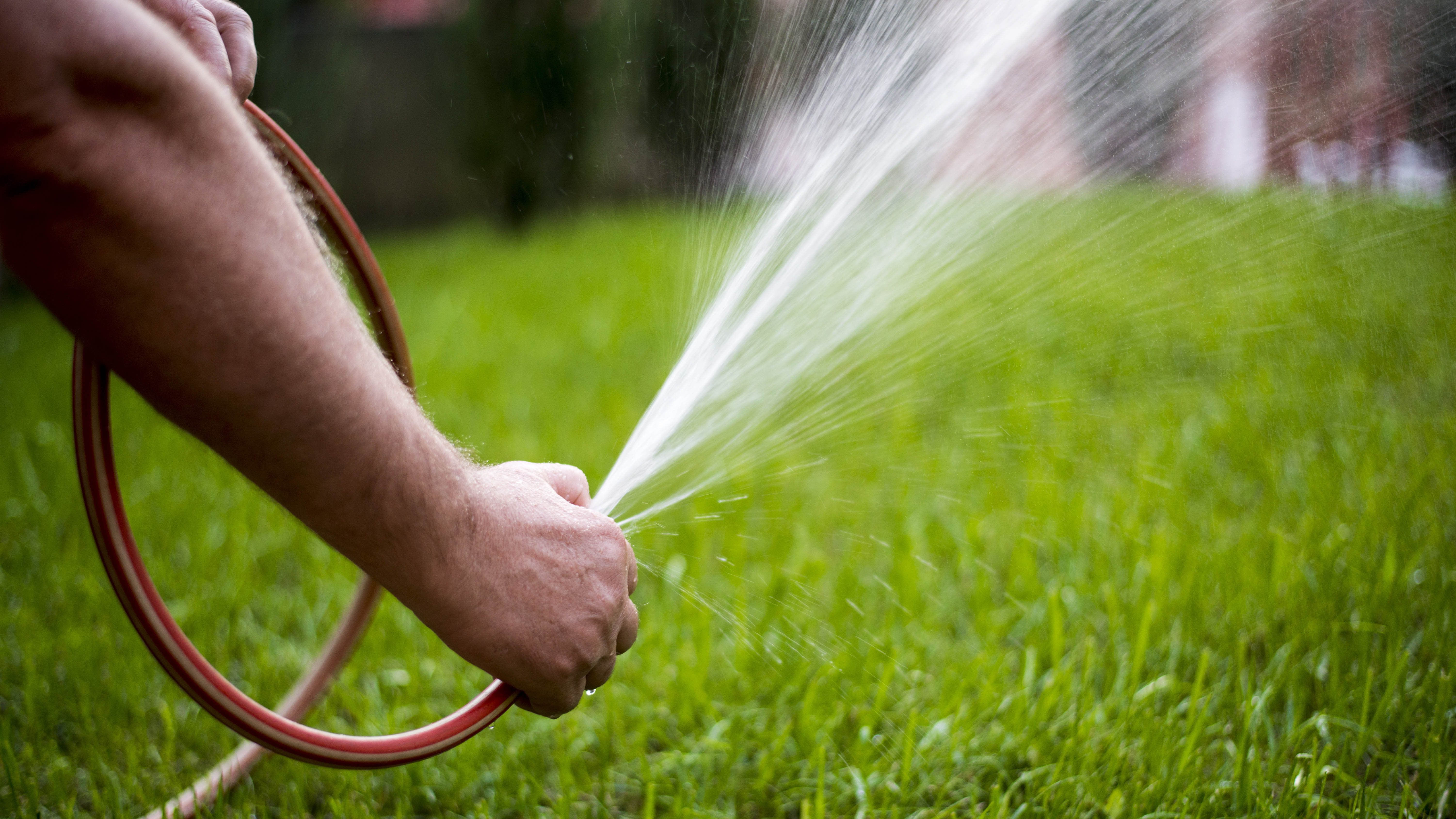
While we’re not watering our lawns as often as we were during the heat of summer, it’s still necessary in the fall, particularly if there’s a period of no rainfall. If you’ve noticed your soil is dry, despite an ample water supply, soil compaction might be the culprit. This is because the increased density doesn’t absorb or allow as much room for moisture in the soil. The result is water runoff — instead of penetrating the soil, it sits on top or drains away elsewhere. This is why aeration is one of the steps to fix a waterlogged lawn.
At the same time, any water which is absorbed at surface level won’t drain away, or dry out as effectively. This leaves your grass roots exposed to moisture for longer than necessary, which can encourage root rot. It’s better to have a loose soil composition so water can penetrate to a sufficient level and dry effectively. This saves you money in terms of water wasted from runoff, and it’s better for the environment as well as your lawn.
4. Heavy foot traffic
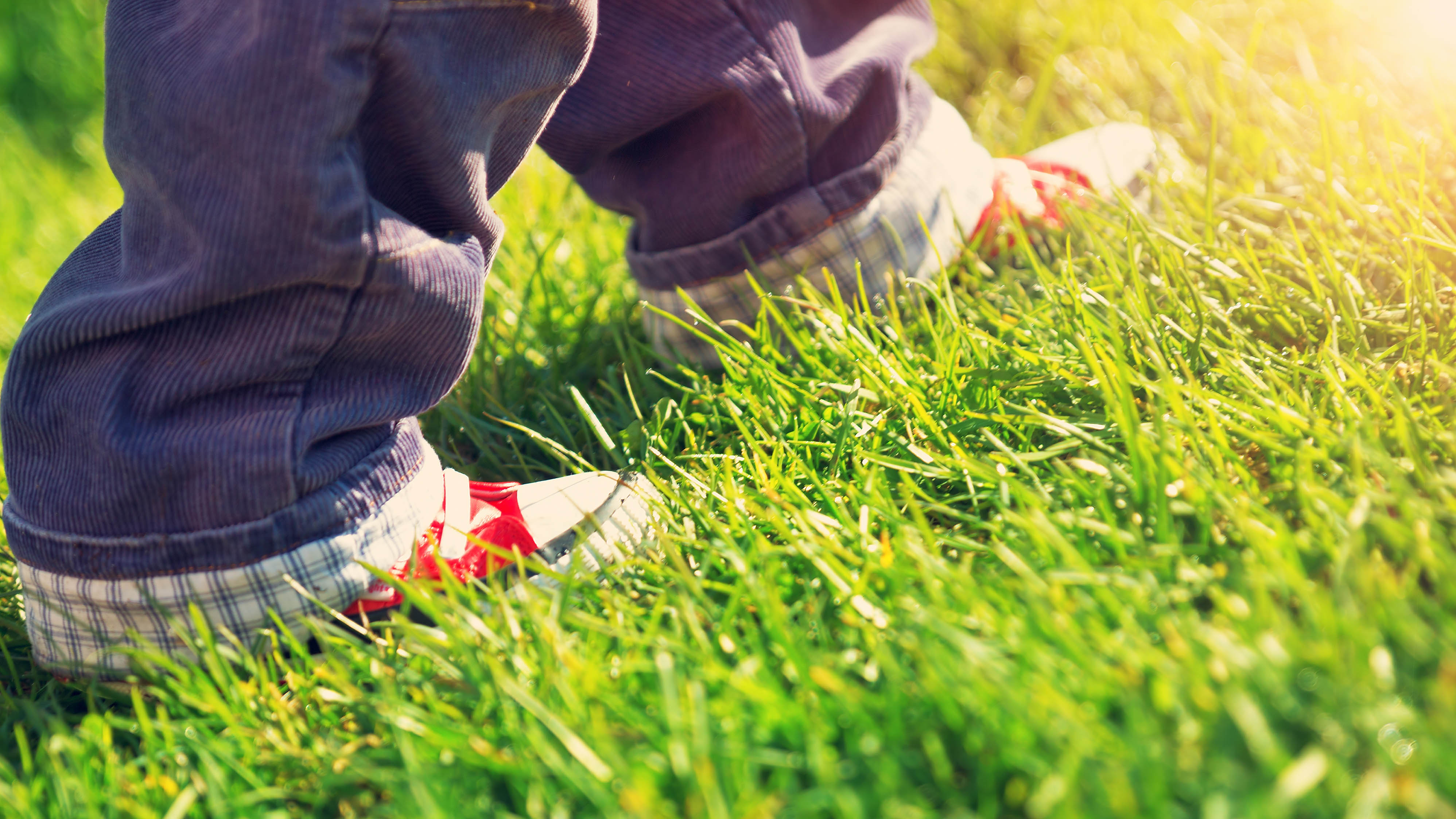
One of the reasons soil is often aerated in late summer or early fall is due to the wear it’s had over the holidays. Your lawn will see increased use during this time, which contributes to soil compaction. You need to cut the grass more regularly, which subjects it to the weight of the lawn mower. Kids may play outside daily as well, which can leave its mark. You may even have rolled your lawn back in the springtime, which can contribute immensely to soil compression.
Ultimately, if you know your lawn has been well-loved over the summer, and has taken a beating because of it, soil aeration may improve things and reset the composition. Just make sure you don’t perform this chore in the full heat of summer, otherwise your grass could dry out easily and fail to recover from the damage.
Senvert Lawn Aerator Spike: $28 @ Amazon
Measuring 36.5 inches high, this lawn aerator has an ergonomic design to save you bending while caring for your lawn. It's simple design with 13 spikes, will create better air circulation in your soil, increasing water and nutrient absorption.
5. Thatch build-up
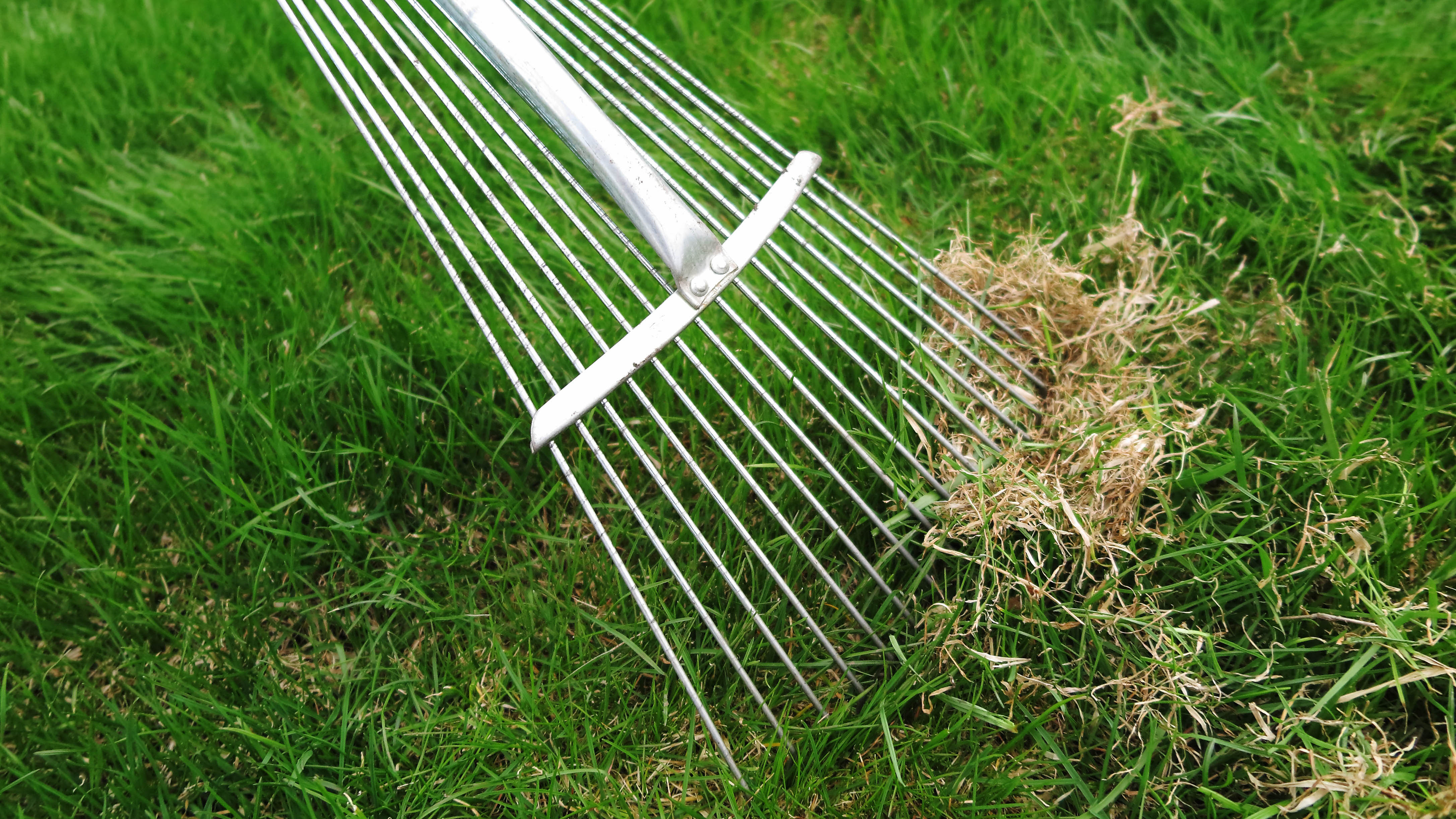
Thatch is a layer of dead plant matter and debris which builds up naturally on the soil surface. When measuring less than ½-inch in thickness, it’s beneficial to your lawn because it helps the soil retain moisture and better insulates it in the colder months. But, if it gets any thicker than this, it becomes detrimental — creating a barrier which prevents water and oxygen from reaching the soil. That’s why learning how to dethatch a lawn is essential for all lawn-lovers. Use a tool such as this Coconut Store Garden Rake ($25, Amazon).
If your soil remains compact, thatch builds up that much faster on the surface. This is because the soil is less hospitable to the microbes that break down this debris. So while thatch builds up naturally, it will have an increased rate on dense soil conditions. You can check your level of thatch by digging up a small inconspicuous area of grass and soil with a trowel and measuring its thickness. Remember, a layer of less than ½-inch is good for your lawn. Dethatching can also damage your lawn's health, so only take on this chore while it's thriving at the peak of growth, only and do so every 2-3 years.
6. Clay soil
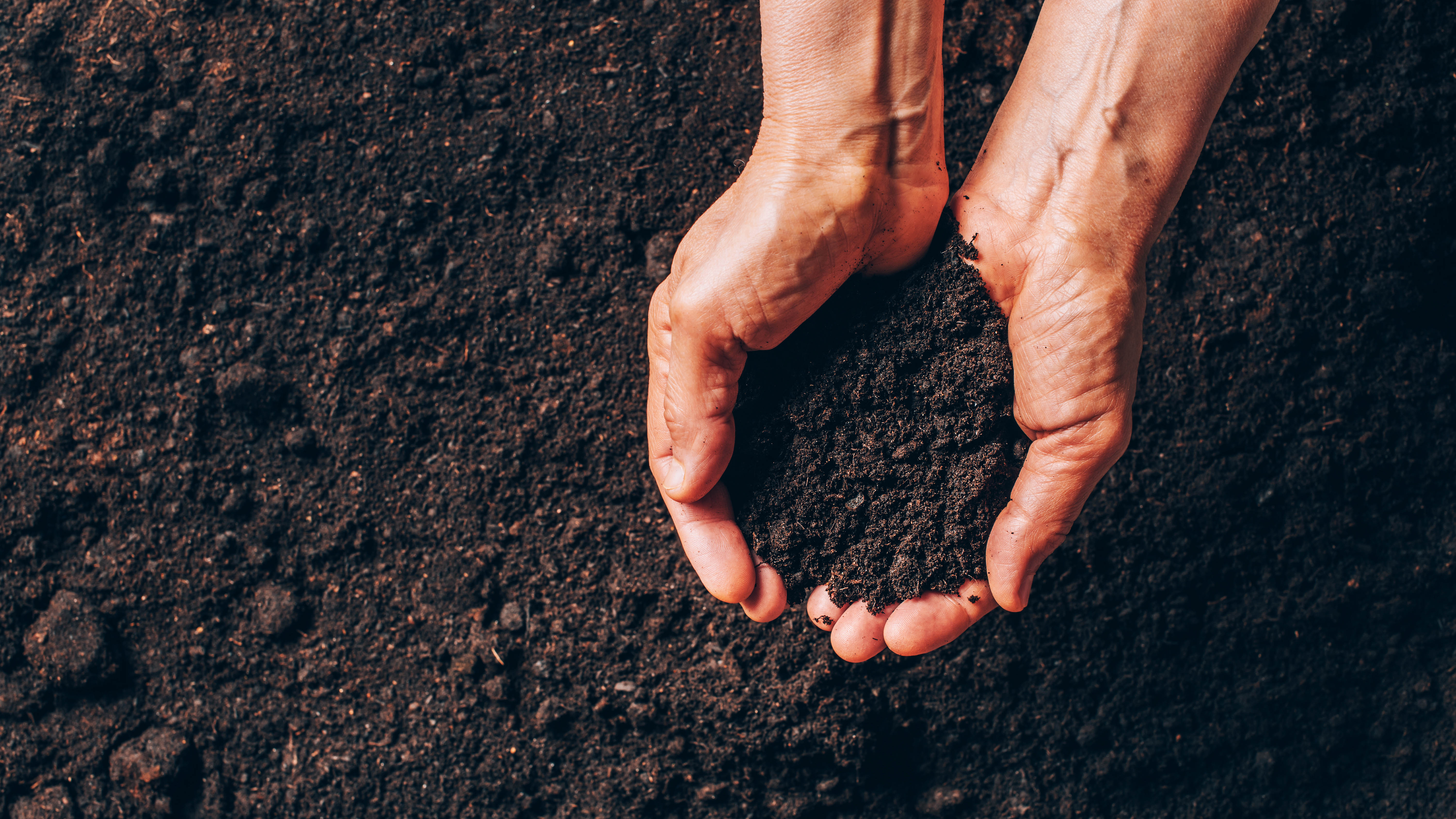
Not all soils are the same — different compositions will have different qualities. For instance, sandy and loamy soil tends to drain well, while clay-heavy soil will retain water and grow sticky with the added moisture. Soil with a high clay content will generally be much heavier as well, which contributes to its compaction rate. As mentioned earlier, clay-rich soil will even weigh itself down into a dense state over time. It also won't spring back so easily when subjected to pressure while moist — it’s a little like plasticine in texture. So if you've got clay heavy soil, it will likely need aerating more often.
There are good points to this soil type. Clay soil contains tiny flat particles with little space in between, which is how it retains moisture so well. It’s also rich in nutrients because these particles are negatively charged, and so attract and cling to positive nutrients, such as calcium, magnesium and potassium. There are some cons to consider as well though — it’s slow to drain, as well as heat up in the spring, plus it’s heavy work with and, of course, compresses easily. There are ways to improve this soil type. You can apply your own organic matter to the mix, and avoid digging or walking on the soil while it’s wet. Do not add sand to the composition, this will just make it more difficult to work with.
You can always test the conditions of your soil using a soil test kit, such as MySoil Soil Test Kit ($29, Amazon).
7. Pour drainage
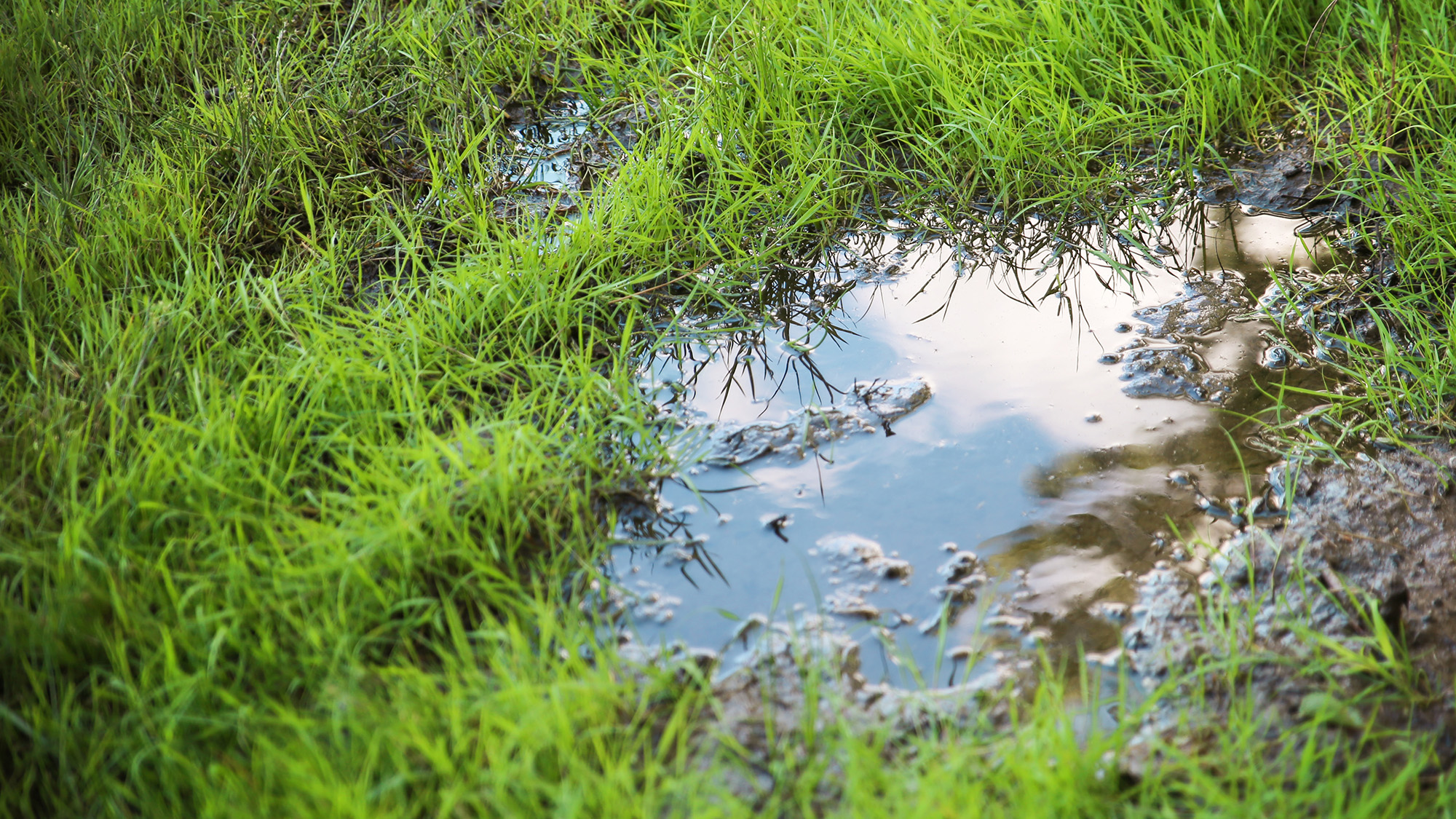
Once you start to spot puddles accumulating on your lawn and they don't disappear and drain away, it's a sure sign that you've got poor drainage. In this case, aeration will help open up the soil and allow the water to drain to those much-needed grass roots deep into the soil. If your yard is on different levels, puddles may only appear in low-lying areas, while raised spaces are puddle-free. Heavy rain and snowfall can also cause puddles on your lawn, while poor drainage will make it worse. Adding organic material or using a soil amendment can help the soil absorb more water and reduce those muddy puddles from messing up your prized lawn.
If you do have poor drainage, one other option, apart from aerating your lawn, is to move as much water away from your turf as you can. If you have paved pathways, think about changing them for gravel, allowing the water to run through, rather than running off onto your lawn.
8. Thinning grass
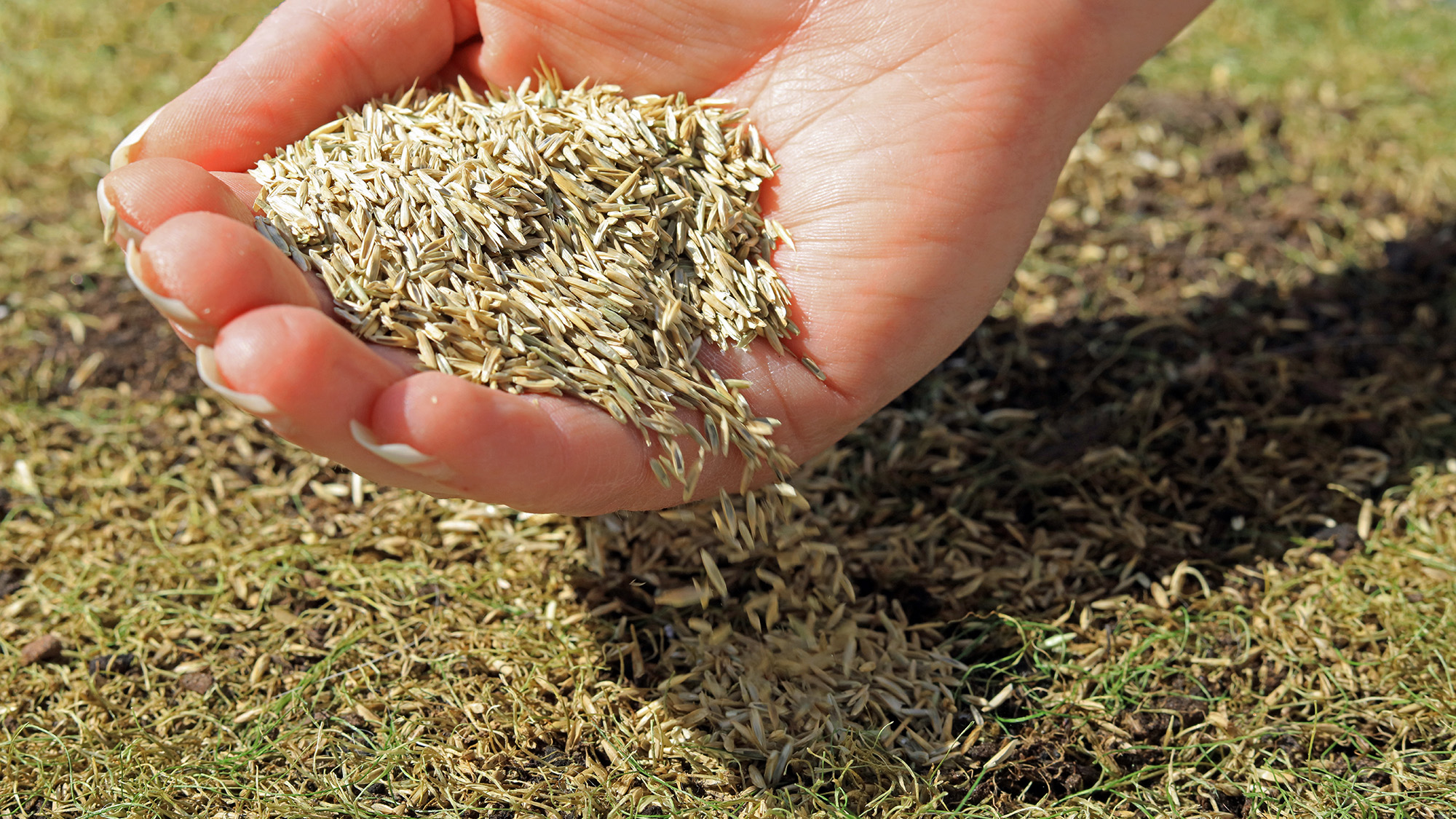
While we all crave a full and beautiful lawn, sometimes we can be disappointed with something that's far from ideal. Thin and patchy grass can look unsightly and transform what could be a show stopping backyard into an unappealing outdoor space.
Thinning grass is an indication of an underlying problem with the health of the lawn. It could be there is a build-up of thatch, which can be remedied by dethatching the lawn to remove leaves, stems and roots. Too much shade can also cause the grass to become thin, so if there's any overhanging shrubs or tree branches, trim them back to allow the sun to shine through. Compacted soil can also cause the grass to become thin, as a lack of water and oxygen can hinder growth, so here, aerating your soil will improve your lawn's health.
Human intervention can also play it's part. Mowing the lawn too short can cause stress, while not watering the lawn enough can create thin spots.
A fertilizer can be applied to help replenish the grass and promote strong and healthy growth, such as Scotts Turf Builder, ($32, Amazon).
9. It’s been a few years
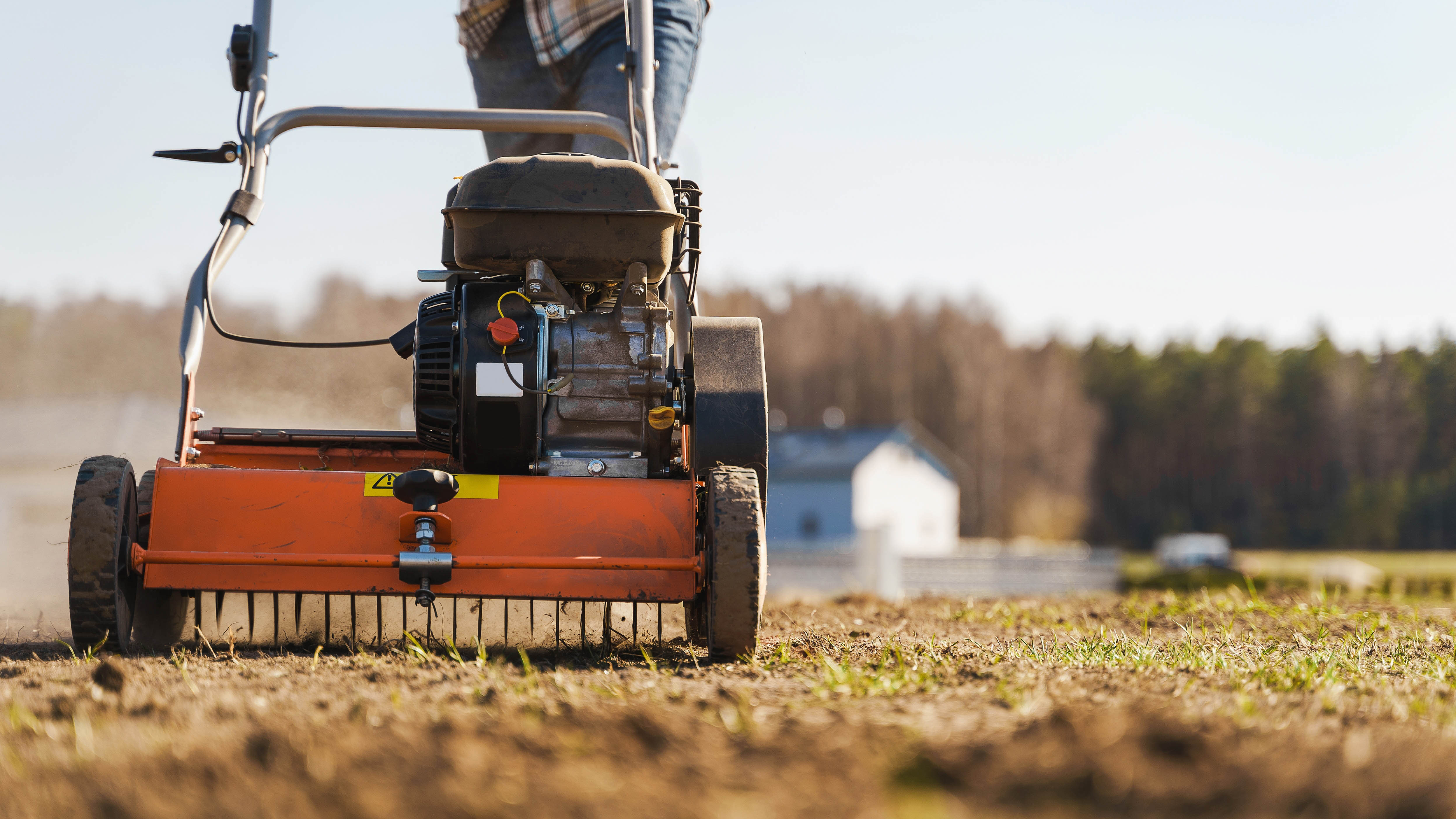
As mentioned in the beginning, soil aeration is not something you want to get in the habit of doing too often. As you puncture the ground to dislodge the soil, you leave grass roots weakened and stressed. Plus, your lawn is vulnerable to weed and insect infestations in the aftermath. So you only want to aerate the soil as often as necessary and at the right time of the year. For the majority, we suggest aerating the soil every 2-3 years for best results. But more often may be required depending on footfall and soil type. If sufficient time has elapsed since you last worked the soil, that could indicate it’s needed again.
Make sure you’re aerating at an appropriate time of year as well. The best time varies depending on your grass type. For cool-season grasses, early spring or fall works well. While warm-season grasses are best aerated in the springtime or early summer. You want to aerate while your grass is healthy and strong, giving it a chance to recover quickly. Avoid aerating while your lawn is weakened or struggling, or you could make things worse.
More from Tom's Guide

Katie Mortram used to be a Homes Editor for Tom's Guide, where she oversaw everything from kitchen appliances to gardening tools, as well as smart home tech. Specializing in providing expert advice for cleaning and home manintenance, she now works as Household Advice Editor for Good Housekeeping.
- Camilla SharmanStaff Writer, Homes
